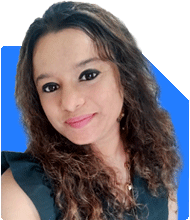42-Year-Old With 9.3 Crore Assets Seeks Investment Advice for Early Retirement, Kids' Education & Health
Ramalingam Kalirajan |10906 Answers |Ask -Follow
Mutual Funds, Financial Planning Expert - Answered on Nov 02, 2024
He has an MBA in finance from the University of Madras and is a certified financial planner.
He is the director and chief financial planner at Holistic Investment, a Chennai-based firm that offers financial planning and wealth management advice.... more

Hi I am 42 years old with two kids both u years old .I have the following asset Mutual fund : 14 lakh Nps tier 1 : 10 lakh Nps tier 2 : 9 lakh Shares : 4 lakhs Pf : 40 lakhs Fd : 1.5 cr 3 homes worth : 8 Cr Running home loan : 1.8 cr Life insurance : 1 cr Health insurance self : 50 lakhs Health insurance family : 1 cr I want to reture now so that i can focus on my kids study and following my other hobbies . How should i diversify my portfolio with the following aim 1.Get monthly income of 3 lakh 2.Should be able to support my kids education when they go to university 3.Save for old age health expenditure
Current Asset Overview and Optimisation
1. Mutual Funds (Rs 14 lakh)
Consider moving to balanced mutual funds that combine growth and stability.
Increase your monthly SIP in actively managed funds, as these can provide higher returns over time compared to index funds.
2. NPS (Tier 1 and Tier 2) – Rs 19 lakh
Maintain your NPS Tier 1 account for tax benefits and retirement security. Avoid withdrawals as it compounds well for long-term growth.
Consider partially reallocating your NPS Tier 2 to mutual funds, which may offer more flexibility and higher returns. However, ensure this aligns with your tax plan.
3. Shares (Rs 4 lakh)
With equity exposure, focus on quality large-cap stocks and diversify across sectors.
For retirement income stability, prioritize less volatile investment options over direct stock holding.
4. Provident Fund (Rs 40 lakh)
As a risk-free asset, your PF provides consistent growth. Preserve this as part of your long-term retirement portfolio.
Ensure PF funds are untouched, as they offer a steady income source for the future.
5. Fixed Deposits (Rs 1.5 crore)
Shift a portion to debt mutual funds for higher post-tax returns, balancing liquidity needs and stability.
Keep a portion of your FDs in place as an emergency fund. Debt funds can offer better returns with tax efficiency for the rest.
6. Real Estate (8 Cr value across three homes)
One of these properties can generate rental income to support your monthly income goal. Ensure consistent rental agreements.
Avoid adding more real estate investments, as liquidity could be a constraint.
7. Health and Life Insurance
Your health insurance cover of Rs 1 crore for the family and Rs 50 lakh for yourself is adequate. Consider increasing cover if you foresee high medical expenses.
Reevaluate your life insurance policy to ensure it’s in line with your family’s future financial needs, especially if you plan to surrender it and reinvest in mutual funds.
Strategic Diversification for Monthly Income
To achieve a monthly income of Rs 3 lakh, let’s allocate your investments wisely for consistent cash flow:
1. Systematic Withdrawal Plans (SWPs)
For Mutual Funds: Use your existing and additional mutual funds for SWPs. Actively managed funds can provide an effective monthly income flow, offering both growth and income.
Equity-Linked SWP: If you’re considering tax-efficient withdrawal, equity SWPs can provide flexibility and help manage tax impacts on withdrawals.
2. Rental Income from Real Estate
Plan for rental income from at least one of your properties. Aim for a stable rental arrangement, contributing towards your Rs 3 lakh monthly goal.
Ensure that your properties are in high-demand areas or enhance rental yield with minor property upgrades, if needed.
3. Debt Mutual Funds and FDs for Stability
Allocate a portion of your FDs to debt funds, as they often outperform traditional FDs after taxes.
Debt funds can provide a steady monthly income and higher tax efficiency. Use these funds for predictable returns, balancing against market-linked income sources.
Supporting Children’s Education
Planning for university education expenses requires disciplined growth-oriented investments:
1. Equity Mutual Funds
Allocate a part of your existing corpus in mutual funds toward education funds. Actively managed equity funds will allow your investments to compound over time, ensuring your children’s education needs are met.
Invest in diversified mutual funds across categories, from large-cap to flexi-cap, to mitigate risks while aiming for high returns.
2. Equity-Linked Savings Scheme (ELSS)
ELSS funds, with their tax benefits and growth potential, can be a valuable tool for this purpose.
While they have a lock-in period, they encourage disciplined saving and are suitable for funding future education expenses.
3. Debt Allocation for Near-Term Needs
For children nearing university age, maintain funds in short-duration debt instruments. This reduces risk while keeping funds accessible.
Debt funds will also help avoid volatility during market downturns, safeguarding their education fund.
Saving for Old Age Health Expenditure
As healthcare costs continue to rise, having funds earmarked for medical needs is essential:
1. Health Insurance Top-Ups
Review your health insurance every few years, increasing the cover if healthcare inflation rises significantly. Your current cover is robust but requires periodic reassessment.
A top-up or super top-up plan can provide additional protection at a minimal cost.
2. Medical Emergency Fund
Set aside a dedicated corpus within debt funds or FDs solely for healthcare emergencies.
Maintain this fund separate from other assets, ensuring easy access in case of sudden health-related needs.
3. Senior Citizen Savings and Debt Funds
Once you reach senior citizen status, consider savings schemes that offer higher interest rates. For now, debt funds and selective FD investments are ideal.
Final Insights
To meet your goals, a balanced and diversified portfolio is key. Regular monitoring and slight adjustments will ensure that your investments are aligned with changing needs. By combining market-linked funds with stable income options, you can achieve a secure retirement.
This strategy focuses on providing monthly income, securing your children’s education, and preparing for healthcare needs in old age.
Best Regards,
K. Ramalingam, MBA, CFP,
Chief Financial Planner,
www.holisticinvestment.in
https://www.youtube.com/@HolisticInvestment
You may like to see similar questions and answers below
Jinal Mehta | Answer |Ask -Follow
Financial Planner - Answered on Jun 24, 2024
Milind Vadjikar | Answer |Ask -Follow
Insurance, Stocks, MF, PF Expert - Answered on Jan 03, 2025
Ramalingam Kalirajan |10906 Answers |Ask -Follow
Mutual Funds, Financial Planning Expert - Answered on Jul 07, 2025
Purshotam Lal |68 Answers |Ask -Follow
Financial Planner, MF and Insurance Expert - Answered on Sep 17, 2025
Reetika Sharma |432 Answers |Ask -Follow
Financial Planner, MF and Insurance Expert - Answered on Sep 19, 2025
Ramalingam Kalirajan |10906 Answers |Ask -Follow
Mutual Funds, Financial Planning Expert - Answered on Dec 19, 2025
Nayagam P P |10859 Answers |Ask -Follow
Career Counsellor - Answered on Dec 19, 2025
Ramalingam Kalirajan |10906 Answers |Ask -Follow
Mutual Funds, Financial Planning Expert - Answered on Dec 19, 2025
Ramalingam Kalirajan |10906 Answers |Ask -Follow
Mutual Funds, Financial Planning Expert - Answered on Dec 19, 2025
Ramalingam Kalirajan |10906 Answers |Ask -Follow
Mutual Funds, Financial Planning Expert - Answered on Dec 19, 2025
Radheshyam Zanwar |6751 Answers |Ask -Follow
MHT-CET, IIT-JEE, NEET-UG Expert - Answered on Dec 19, 2025
Radheshyam Zanwar |6751 Answers |Ask -Follow
MHT-CET, IIT-JEE, NEET-UG Expert - Answered on Dec 19, 2025
Samraat Jadhav |2514 Answers |Ask -Follow
Stock Market Expert - Answered on Dec 18, 2025
Reetika Sharma |432 Answers |Ask -Follow
Financial Planner, MF and Insurance Expert - Answered on Dec 18, 2025
Reetika Sharma |432 Answers |Ask -Follow
Financial Planner, MF and Insurance Expert - Answered on Dec 18, 2025













.jpg)













